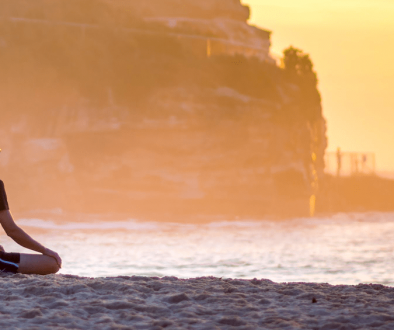The Yoga Sutras
The first four lines of the yoga sutras
Patanjalis yoga sutras are sometimes seen as daunting but here I am attemtping to simplify and clarify some of the basic principles in order to convey their ability to enrich, encourage and inform the practice of the tools of yoga.
The Yoga Sutras are a guide to the experience of a state of yoga, what can occur along the way and advice on how to navigate the journey towards that state.
Patanjali begins by defining a state of yoga as a peaceful, transparent, reflective and calm state of mind (YS 1.2 yoga is to still the movements of the mind). This calm state of mind allows us to experience ourselves as we really are, spacious and free.
To explore this he describes two different components and two possible scenarios.
The first component is the spiritual principle, often referred to as awareness; and the second the natural principle, which is consciousness. The spiritual principle, sometimes called the essential Self, the seer or observer is unchanging and is the power of seeing.
The natural principle differs in that it is everything that is not the seer, including the mind, breath, body, environment and is subject to constant change. The mind is a large part of the field of interest to the yoga practitioner as it is part of the natural principal as well as being the instrument of seeing.
The first scenario Patanjali presents is one in which the Seer can experience itself as it really is, a sense of wholeness and freedom.
The second one is where the mind, the instrument of seeing, is disturbed and we mistake ourselves to be the contents of our minds and life circumstances rather than the spiritual principle.
To reduce this confusion between the Seer and the contents of the mind the ancients tell us that spirit cannot be affected directly but that the lens of the mind can be examined and gradually cleared, enabling clearer vision. When vision becomes gradually clearer due to a clearer lens we are moving closer to the first scenario of freedom and wholeness, rather than believing that we are the contents of our minds and our life circumstances presented in the second one.
A solution to this confusion is to spend time looking at the the field of the body, breath and mind as we practice yoga. When we spend time looking at anything, we either begin or continue a relationship with it. As we start looking at something we initially notice larger elements of it and as we continue looking we begin to notice more details and maybe how these elements may interact, so becoming increasingly familiar with the mind, body and breath.
This is applying constant discernment and discrimination (viveka) to the mind, breath and body.
“Viveka is present when the difference between citta (mind) and purusha (spiritual principle) is clear” – Desikachar.
Applying this practically, you can see how paying attention to the body, breath and mind with yoga practices can lead to a better knowledge of the them.
Sometimes, for a beginner starting an asana practice, the body can feel a bit like one entity, until movement with awareness shows that many physical aspects we previously thought were joined (samyoga) are actually separate (viyoga).They are simultaneously independant and interrelated. The same is also true of the breath and the mind — pranayama and meditation practices help to understand their nature and our awareness of them.
According to Hindu philosophy, the changing nature of the mind is due to it being subject to three different energies. Taking the often used example of the moon reflected in water, firstly there is a state of mind which is calm, luminous and transparent, this is both the inherent and ideal state of the mind. In this sattvic state the mind (water) can reflect the true nature of awareness back to itself, enabling Patanjali’s first scenario — awareness can abide in its own nature. The reflectivity and transparancy of the water not alone accurately reflects the moon to itself but also allows us to see the mind as it inherently is without disturbance.
Then there is the energy of activity, a rajasic energy which is necessary to get things done, but can easily tip over into agitation, distorting the surface of the water and giving spirit a false reflection of itself. The third is tamas, a heavy and obscuring energy. A certain amount of this energy is needed to feel a sense of stability but beyond that its mud-like consistency obscures the reflective surface of the water.
A yoga practice which works well for you is one which gradually cultivates the qualities of clarity and luminosity in the mind, body and breath and which reduces agitation and dullness.
As the clouds in the mind are gradually cleared, a feeling of wholeness develops over time. This sense of wholeness is the presence of the spiritual principle which under ordinary circumstances is often covered over by the commotion of the mind.
The point of yoga, as a very dear yoga teacher once told me, is joy!
Ann-Marie works as a one to one yoga therapist and yoga teacher in the tradition of Krishnamacharya and his son Desikacar. She teaches regular half day weekend yoga retreats and weekly classes in north Wicklow and South Dublin. Email [email protected]

